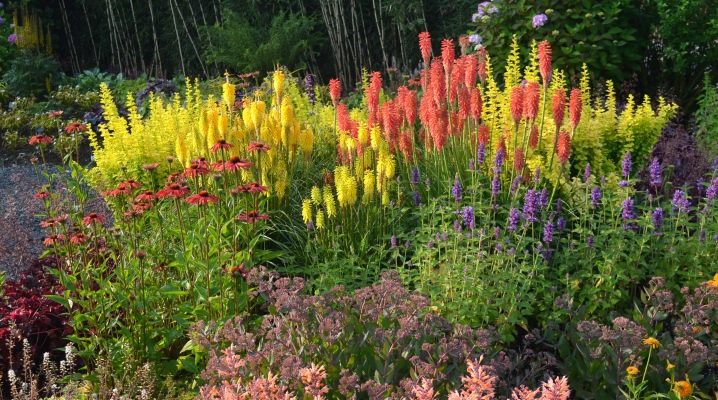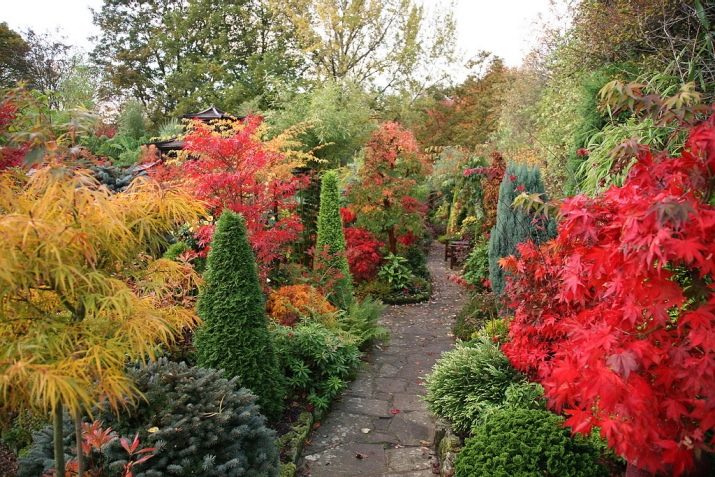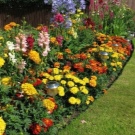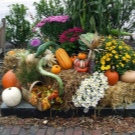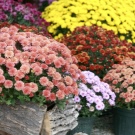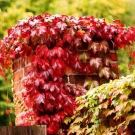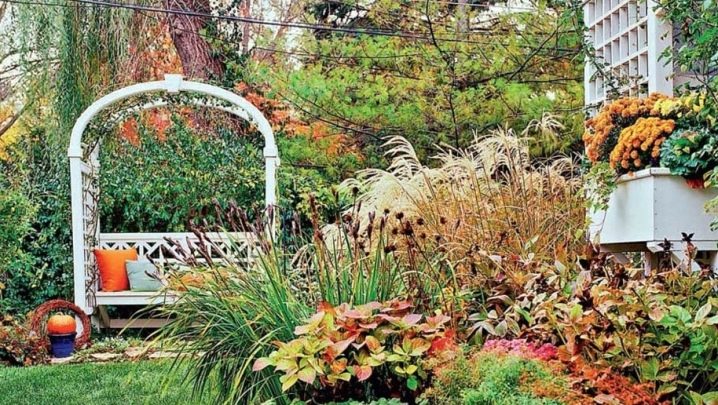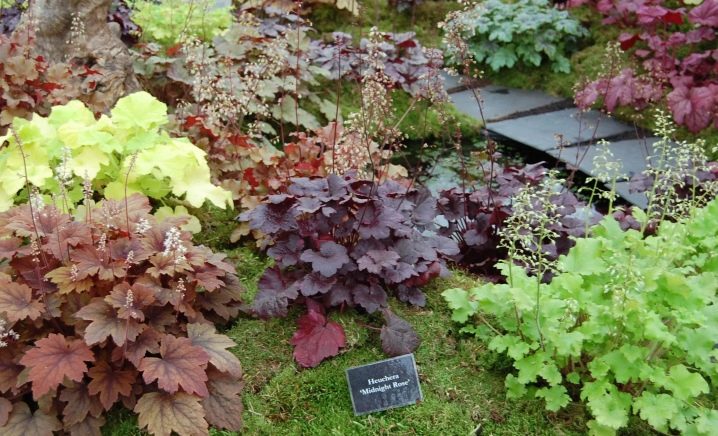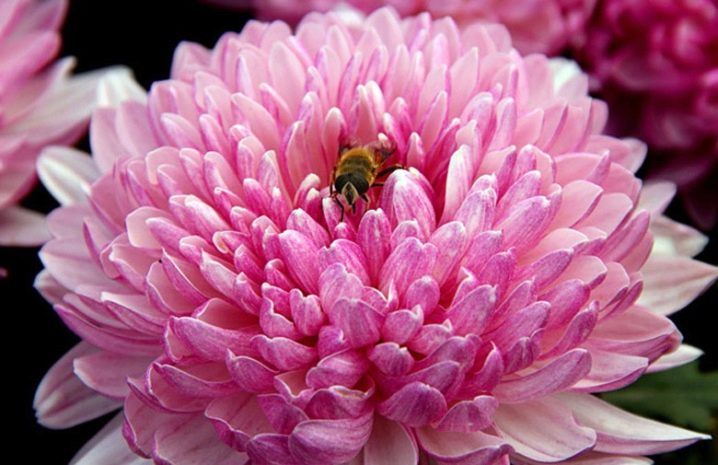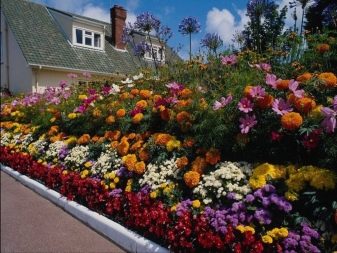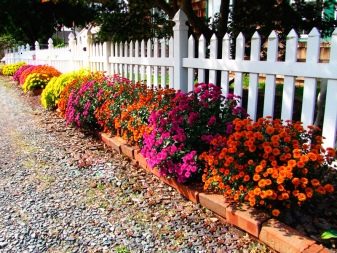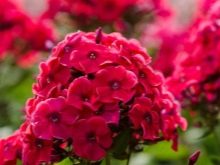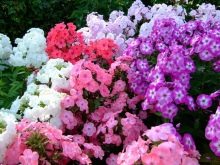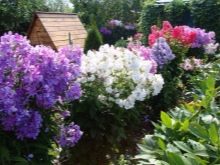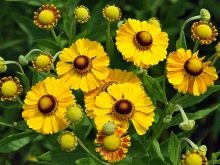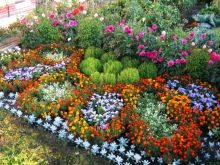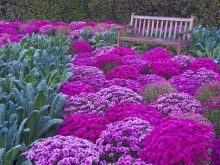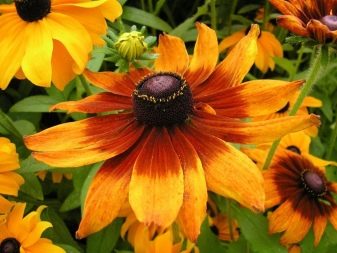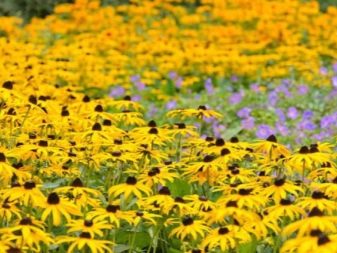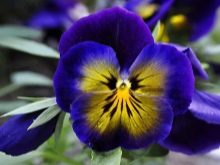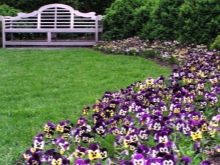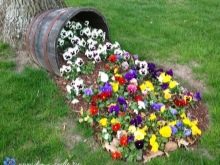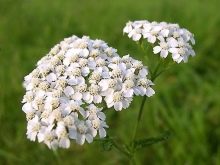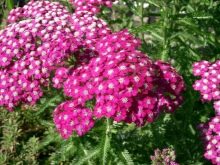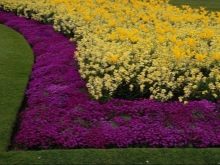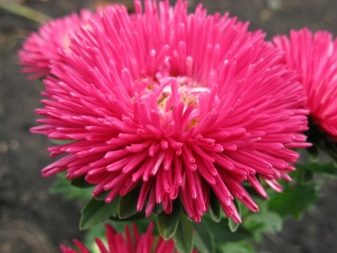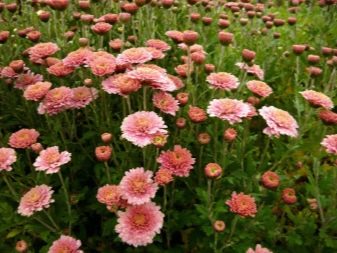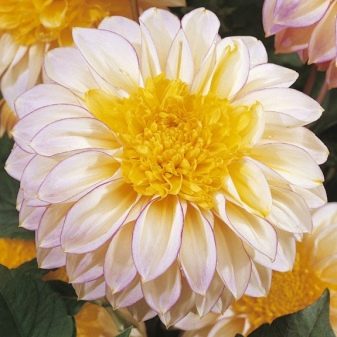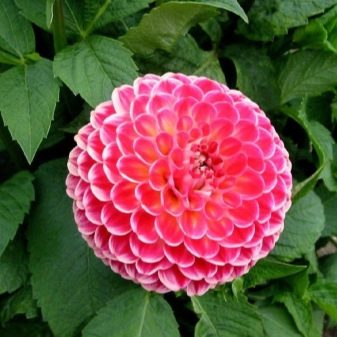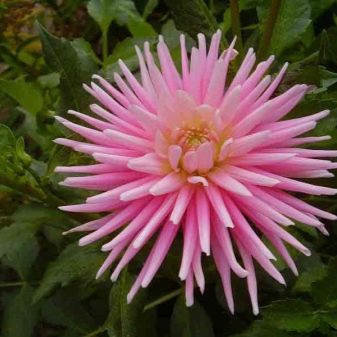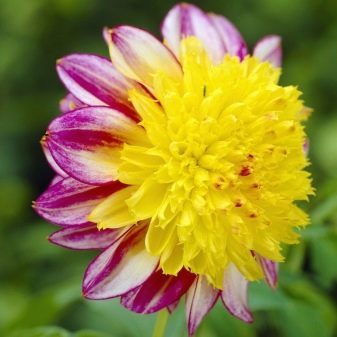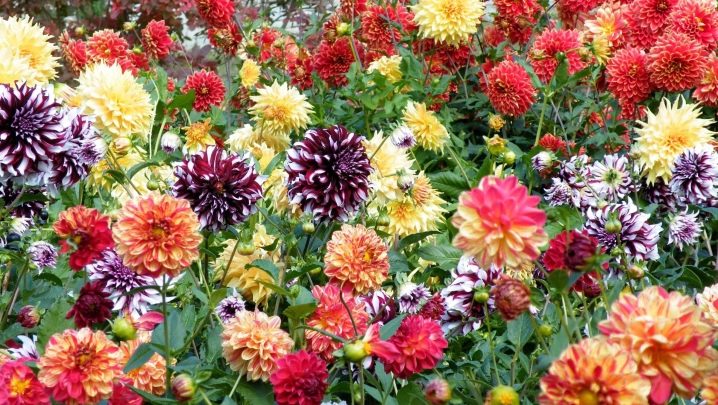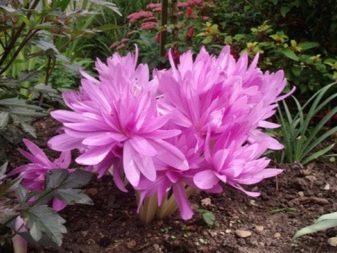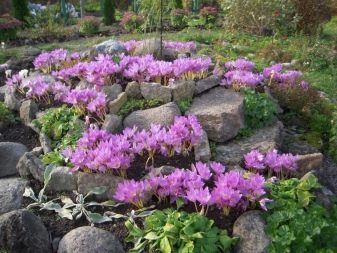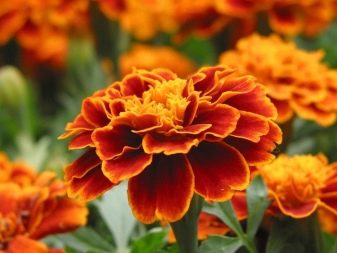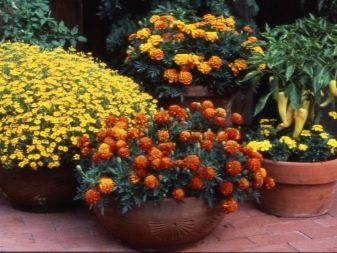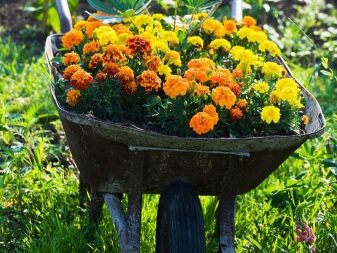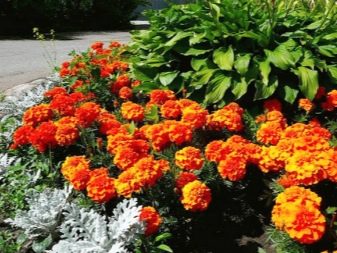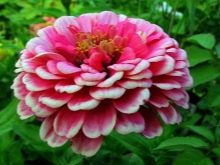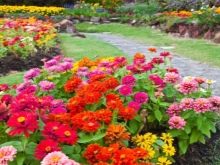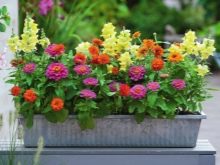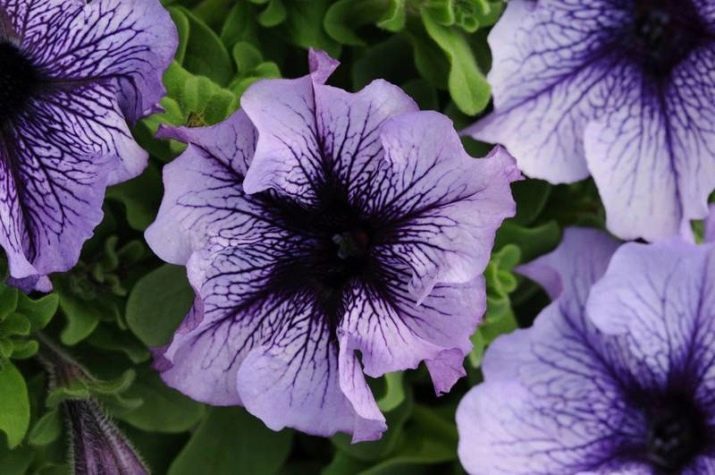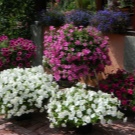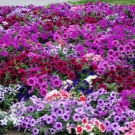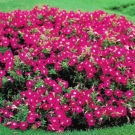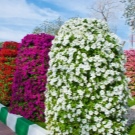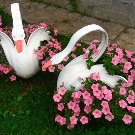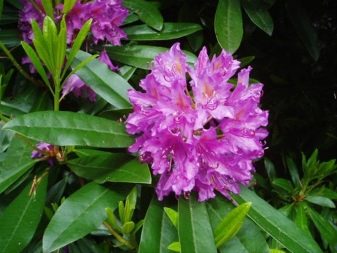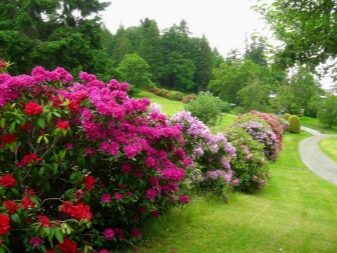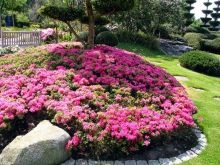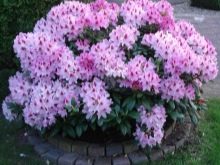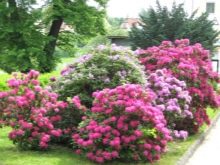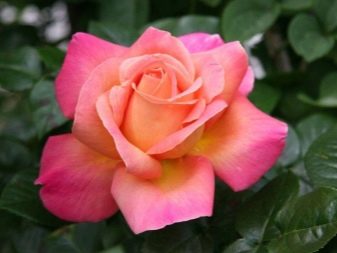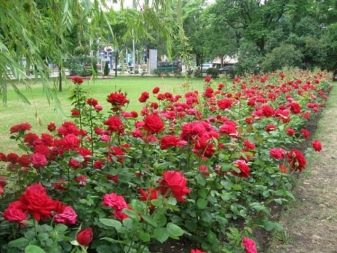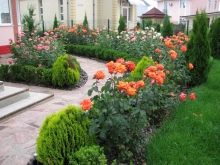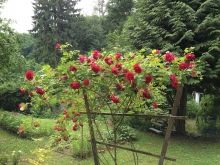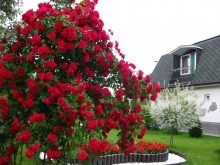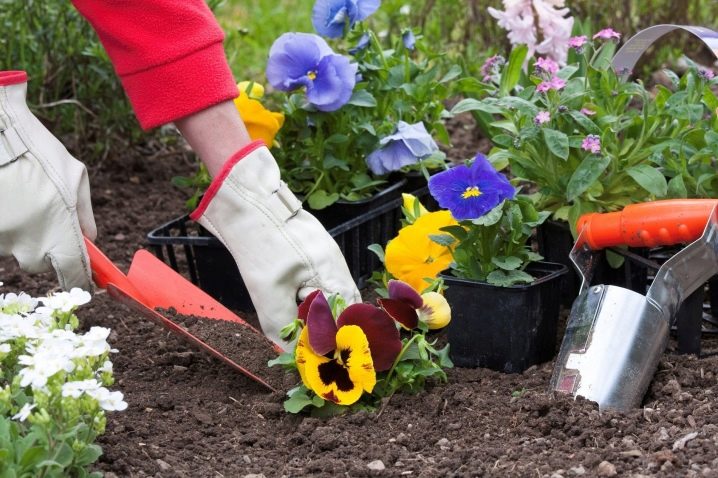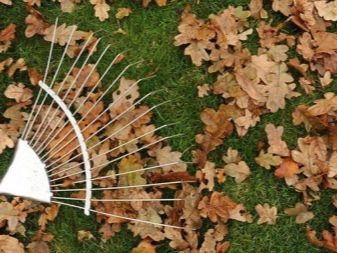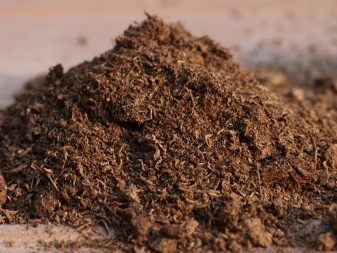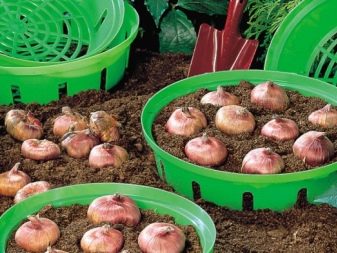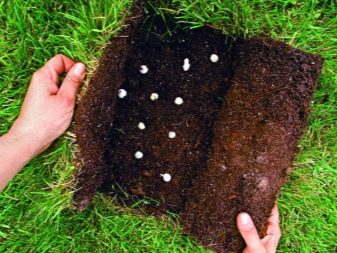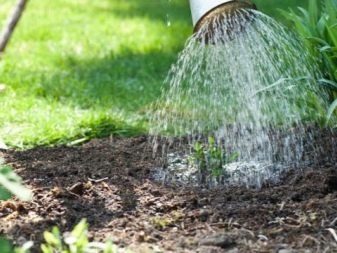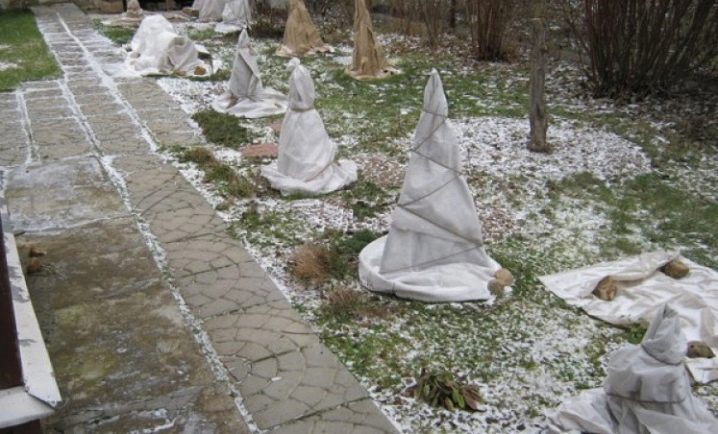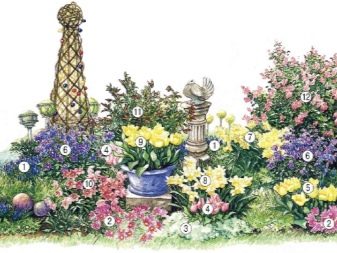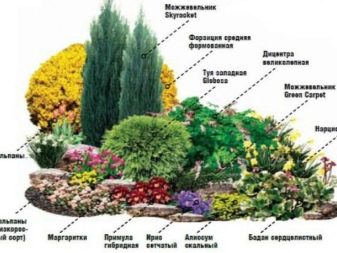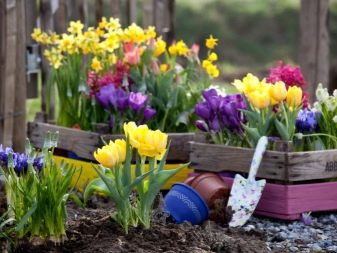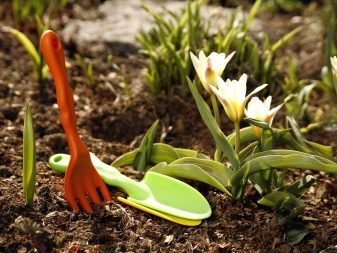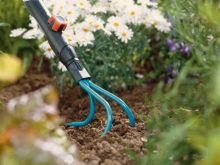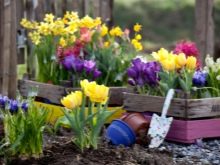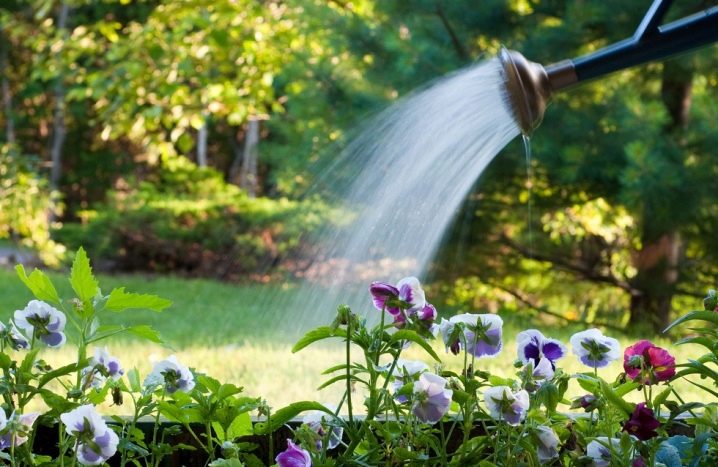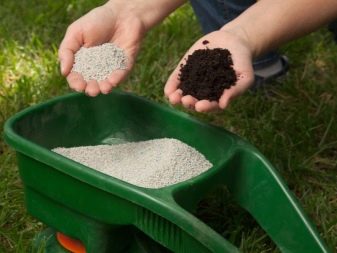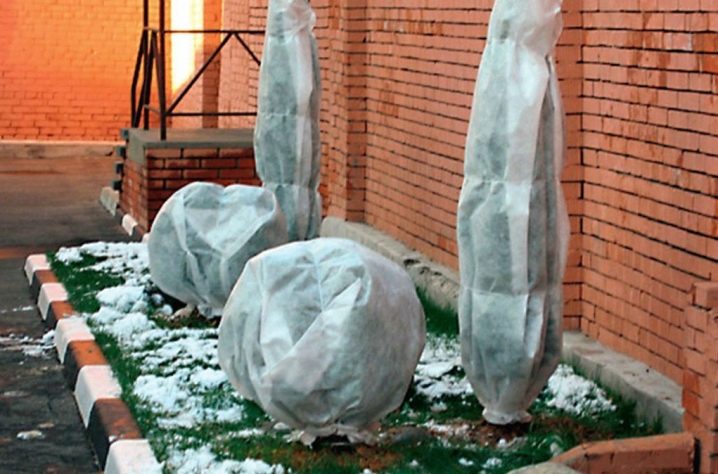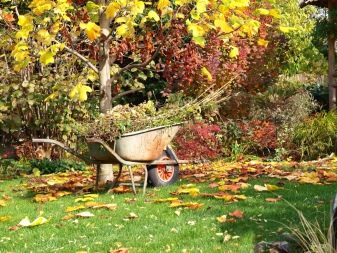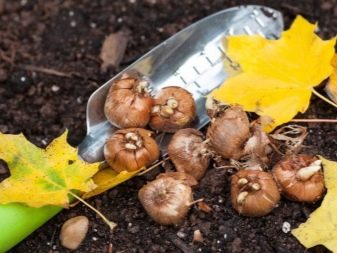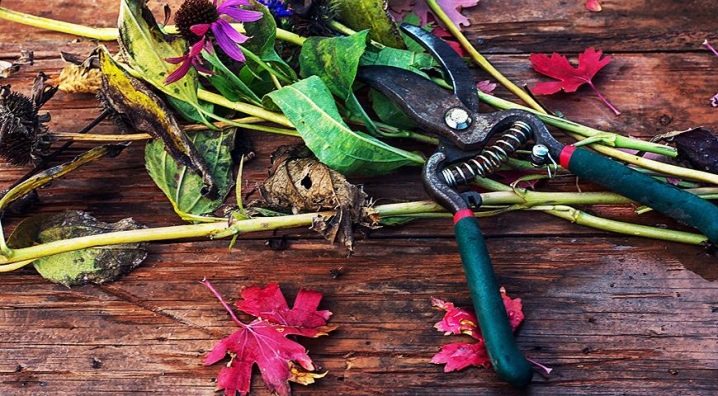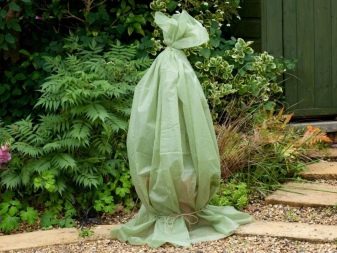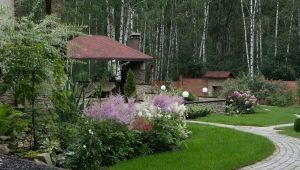Landscape design: plants for autumn flower beds
Many dream of a luxurious flower garden on the site, but with the arrival of autumn summer flowers wither and flowerbeds begin to thin. It is easy to rectify the situation - you can plant later varieties of flowers that will delight you with their beauty up to the first frost. From this article you will learn about all the intricacies of landscape plant design for autumn flower beds.
Special features
With the onset of autumn, the day becomes shorter, and the sun is not very pleasing with warm and bright rays. But it is precisely this time that is ideal for late flowering plants that can be used to decorate a private plot. In addition, flower beds around the house will always cheer up and help to cope with the autumn blues.
The flowering period in late plants begins in September and lasts almost until the end of November. Before setting up a flower bed, it is necessary to become familiar with the characteristics of each plant species. Take care of late instances need more in the spring. Experienced Gardeners First, seedlings are grown at home, and only at the end of flowering summer plants are transplanted into the soil.
When all nature fades and begins to prepare for the winter, you can decorate the site with bright and unusual flowering plants. Autumn flowers - the best option for cottages or country houses, where the owners go less often. And all because they are completely uncaptitious and do not require too attentive care. Some species will be pleased with abundant flowering even after the first frost.
What to choose?
There are many autumn colors. It is impossible to count all their names, and it is very difficult to choose the most beautiful late flower. All of them have their own features and advantages. We will talk about the most popular and beautiful autumn colors.
Chrysanthemum - is the main autumn flower, which is found in almost every flowerbed. The color of the chrysanthemum is different, but the most effective look white, lilac, pink, maroon, yellow varieties. Early chrysanthemums bloom from late summer to mid-autumn, and late specimens can survive up to the first frost.
Varietal chrysanthemums with large flowers do not tolerate cold, but small species with small heads are less sensitive and unpretentious.Recently, the Korean chrysanthemum is very popular - the bush grows small, but the whole is covered with small bright flowers.
Care for chrysanthemum is almost not needed. The main thing is to prepare the soil and deeply loosen it before planting. You can fertilize with organic fertilizer, then the flowering will be more abundant. Chrysanthemum loves moisture, and for wintering you can do drainage. Mulching plants will help move the first frost.
There are many varieties of chrysanthemum, each of which has its own stem height, size of buds, color palette. The highest flowers can reach up to 0.5 m.
Late species include high shrub phlox with bright juicy flowers - from pale pink to purple. Striped varieties of phlox look especially beautiful on a flowerbed.
The flowering period takes the first decade of autumn. To maintain a beautiful view of the flower bed, you should regularly remove dried heads from the stalks of flowers.
Phloxes like well-fertilized soil, which periodically needs to be loosened and watered.
Gelenium is a real natural miracle that perfectly complements the landscape with a hat of sunny yellow, red-orange or brick-purple flowers. It is easy to maintain and is considered a highly growing type - the height of the bush reaches 0.5 m.
Gelenium loves moist, well-fertilized soil, so it is perfectly suited for decorating a flower bed near pools, lakes. A helenium hedge will perfectly complement a large garden plot. Usually adjacent to asters, monard, delphinium or verbena.
Begins to bloom from late summer until early fall. Gelenium should be planted in well-lighted flowerbeds. Even if the weather will be rainy, this flower will bloom profusely throughout the period.
Rudbeckia is also often found in country beds. Large bright yellow and orange flowers, resembling a large chamomile, will be a wonderful decoration of any area. Rudbeckia looks good in the background of the flower garden, perfectly harmonizes with coniferous plants. Especially popular in the design of rockeries and home lawns.
The flowering period begins in the first year of planting and lasts until the first frost. He likes well-moistened soil, grows in almost any conditions and does not need special care. Despite the simplicity and simplicity of the buds, rudbeckia is the original choice for decorating the landscape.
Pansies (or Vitrokka violet, viola) - a short-growing plant (15-30 cm in height), resembling a violet.Often found in urban flowerbeds, private plots, balconies, outdoor flowerpots. It grows well in the shade, but in this case the flowering will not be too abundant.. A large number of viola varieties have been developed - white, yellow, purple, blue, red and even black. The color scheme of buds is diverse, so that the beds of pansies are bright and interesting.
Yarrow is a tall plant that tolerates drought well, but for its abundant flowering it is recommended to ensure regular watering. Pink, yellow, red and snowy yarrow looks great against the background of other flowers in the middle of the flower bed.
To bloom was constant, you should promptly remove dried heads.
Astra is deservedly considered the main flower of autumn, and all because of the large and abundant flowering period. There are many varieties of asters, differing in the height of the bush and colors, but they are all unpretentious in cultivation, they easily multiply and are able to tolerate cold snaps easily. Experienced gardeners plant different types of asters, combining perennial and annual varieties. White, blue, pink, purple asters will be a real gem of your garden.
Dahlias - a mysterious flower that looks good not only in a flowerbed, but also in a bouquet.It carries a shadow and grows in almost any conditions. They love moisturizing, but an overabundance of moisture is destructive for them.
There are six main types of dahlias:
- peony;
- spherical;
- needle;
- anemic;
- collar;
- nymphs.
All varieties differ from each other in shape, size and degree of terry. The largest flowers can reach up to 10-12 cm. To date, more than 2000 varieties have been bred, and they all amaze with their beauty and aroma. Dahlia blooms relatively short time - before the first frost. But this does not prevent them from being the main flowers of park flower beds.
Kolhikum is a sweet spring plant that for some reason decided to bloom in the fall. It belongs to the tuber-bulbous perennial varieties, reaches a height of only 20 cm, prefers loose soil and the southern side of flower beds. Unpretentious and does not need frequent watering. There are about 70 varieties of this plant.
It is worth noting that these most delicate flowers are not harmless - Kolhikum belongs to poisonous plants, so you need to handle them carefully. Glades of Kolkhikum against the backdrop of a dull autumn landscape simply fascinate delightfully-delicate blue, pink, white flowers.Kolhikum is indispensable in the creation of original flower beds and is the best suited for rock gardens.
Marigolds (taghetis) - pets gardeners. There are about 50 annual and perennial varieties of this plant. An incredible solar range of marigolds includes rich sunny yellow, reddish-brown, two-colored and even double flowers.
Based on the shape of the flower head, marigolds are simple, clove-colored, chrysanthemum, double and semi-double. They have a characteristic aroma and grow only 15-20 cm in height. Picturesque flower carpet of marigolds will delight you with a delightful bloom all autumn. Hybrid marigold varieties are especially popular with gardeners.
Zinnia is very loved by many gardeners. For even, as if not bending, the stalk in the people he was called "Major." The shape of the flower is simple and terry, and the flowers are of particular size and juiciness. The flowering period takes the whole of September. Prefer nutrient soil, like the sun and can not tolerate strong winds.
These unpretentious flowers look great on city beds, in gardens, used to decorate borders, rabatok, balconies.Often planted in large street vases.
Particularly beautiful is the combination of several varieties of zinnia in one flowerbed.
Petunia - incredibly popular flowers, unassuming to the environment of growth, do not need special care and are suitable for planting in different regions and climatic zones.
There are about 20 species of this flower, there are perennial and annual species. Depending on the variety, petunias may have an erect or creeping stem. In any case, the length of the stem is no more than 10 cm. These flowers are a great opportunity to dilute green park lawns, front gardens, lawns with bright colors. Look great in hanging pots, can become a real decoration of the garden plot.
Rhododendron. Belongs to evergreen plants, which are often used in the landscape design of country houses. The flowering period is in June, but its dark green foliage will noticeably revive the exterior of the site in the autumn-winter period.
For our climate, the winter variety is best suited - rhododendron Catevba grandiflorum. It has a characteristic lush crown and high strong stems (up to 4 m in height).A year after planting, it grows almost 10-12 cm. The plant belongs to long-term varieties and with proper care will bloom for almost a hundred years. Loves sour, slightly acidic peat or loamy soil.
Rose is the queen of the flower beds, able to transform the exterior, adding to it aristocracy and charm.
Modern frost-resistant varieties are able to bloom even after small frosts. In addition, to date, many winter pink varieties have been bred that are optimally suited to our area. These include Canadian and American species, park cultures that delight not only frost resistance, but also a variety of shades. The range is so diverse that it is simply impossible to choose the most beautiful variety.
Landing
Planting flowers in the fall is good because their seeds will have time to go through a period of stratification in the soil before the summer and they will sprout and start blooming next season. For the autumn planting are suitable varieties of asters, mattiol, calendula, marigolds, godecia, chrysanthemums, delphinium, iberis, laurel, resades, scabiose.
Land suitable for planting any, most importantly, to ensure that it was sufficiently fertilized and processed.The difficulty in planting is when working with saline soil. In this case, work begins with the removal of salts, and only then proceed to the loosening of the soil and planting seeds. If the land is small, then the salt will leave immediately after abundant watering. Good help replacing the top layer of soil for a more fertile.
In large garden areas, salt removal is not enough. It is necessary to improve the structure of the soil by adding humus, leaf soil, compost.
It happens that in some areas the groundwater flows close to the surface. It is suitable for annual plants whose roots grow in the upper layer of the soil. But the planting of perennial varieties in such a land involves the creation of drainage to remove excess water. To saturate the soil with oxygen, sheet and peat land, humus, manure, sand are added to it.
Leaf land can be prepared by yourself. This is done as follows:
- in the fall, you need to collect leaves on the site (all are suitable, except for oak);
- it is necessary to pile them up, dilute them with earth, lime and mineral fertilizers;
- during the summer in a heap you need to maintain a moist environment, occasionally loosening it.
Following the recommendations, leafy land will be ready for next season. Land for flower beds need to prepare in advance.
First, you need to dig up the soil to a depth of 30-40 cm and leave it in an unrooted state. This will help rid the soil of the harmful insects that inhabit it. In addition, large clumps of earth will hold up the snow, thus saturating the soil with moisture.
In the first decade of autumn, you can start planting. In early September, you can plant phlox, solidago, rudbeckia, astilba. Small-bulb plants can be planted since August. These include crocuses, Scylla, Muscari, Pushkaria, hionodoksy.
Experienced gardeners do not recommend planting all the plants at once. Planting each plant should be in accordance with the recommendations of experts. For example, late planting of daffodils will lead to the death of the plant: the roots will not have time to form before the start of frost.
The planting depth of bulbous plants is three bulb diameters. Do not forget to take into account the condition of the soil - this is also important for wintering plants. After planting bulbous soil should be watered, compacted and mulched.
The first part of September is also well suited for planting biennial and perennial flowers such as daisies, viols, forget-me-nots, carnations. The seedling will have time to take root before the first cold weather and will be able to successfully endure the cold months.
In addition, this time is optimal for dividing and seating astilbe, hosts, lupine, irises, brunners, daylilies. At the end of the work, the sections on the plants should be powdered with a thin layer of crushed charcoal or ash.
The division of the bushes of Rudbeckia, aquilegia, phlox should be postponed until the end of the month.
All plants planted before the beginning of a large leaf fall or a month before the soil freezes will be able to take root in the soil and their wintering will be successful. In October, hyacinth and tulip are planted in the ground. If autumn is rich in precipitation, then the beds with hyacinth can be covered with dense polyethylene - this will help avoid overwetting. Tulips are moisture-loving plants and do not need shelter.
It is worth noting that if you plant tulips in early October, then their roots, stems and leaves are almost not affected by the variegation virus. October is suitable for planting lilies of the valley, dividing and seating peony.If you did not have time to plant tulips in October, you can do it in early November. However, in this case, they can take root only under the condition of clear and dry weather. When the temperature drops to +5 degrees, the bulbs will die.
November is not suitable for planting perennials. At this time, spend only hiding and mulching.
Of course, there are varieties of plants, the planting of which can last right up to the first frost. Then the bed for sowing needs to be prepared before the soil freezes. Planting should be in thick rows, as the frost reduces the germination of shoots. If in the spring the seeds grow too thick, they can be thinned out.
Beautiful compositions
You can create a unique design of the landscape of a country plot with the help of a bed of continuous flowering. For this it is important to know not only the period of flowering of various plants, but also the requirements for the conditions and care for their cultivation.
When planting perennials on a plot, you should maintain a certain distance between the bulbs. This will allow to create suitable conditions for the growth, flowering and reproduction of plants.
Flowers for the flower beds should be selected carefully, taking into account the need for watering, soil characteristics, the need for care. Perennial varieties of plants are good because using only a few species, you can create a unique flower bed that will delight in continuous flowering.
Each plant has about 3-4 weeks of flowering. This means that if one plant blooms, then the other either only produces a bud or is already fading. therefore the more flowering and decorative leafy plants in the flowerbed, the more original and more beautiful will be its appearance.
It is possible to create a unique drawing of a flowerbed, having previously thought out combinations of different plants. So it will be clear what number of seeds or bulbs you need. In addition, it is a great way to calculate the color gamut of the flower bed.
Almost all the flowerbeds consist of a center, side compositions and contour. As a contour suitable soil-covering plants of bright colors. But in the center you can add undersized flowers of various varieties. By arranging a flower bed along a fence or wall, tall specimens can be landed from behind - they will be the backdrop for the entire composition.
Care Tips
Landscape design implies not only drawing up the right composition, but also the selection of such plants that will harmoniously look on the territory of one flowerbed. It is possible to provide beautiful appearance of a bed, knowing the basic rules on care of them.
Care for late flowers occurs in several stages: dressing, loosening the soil, removing weeds and watering.
Watering
In the cold season, beds from late plants do not need frequent and abundant watering. This is especially true for flowering plants that do not need moisture in large quantities. If precipitation falls regularly, watering can be stopped or minimized. There are some varieties of plants (for example, roses), which in September do not water at all. However, this does not apply to plants that are only planted in the soil - watering for them should be regular.
Top dressing
In autumn, the soil is fertilized only with potassium and phosphorus. Fertilizers are scattered around the perimeter of the flower bed in a dry form, then they are buried in the ground and must be watered.
Nitrogen-containing bait is not recommended to be introduced into the soil. Besides, not all flowers have the need for fertilized soil.For example, the annuals do not need to feed.
Fertilizers are applied to the soil only after the plants are removed from it.
Preparing for the winter
Soil preparation for winter is an important part of the preparatory work at the dacha. However, many lose sight of it or even consider it insignificant. But experienced gardeners know that this period is the key to gardening.
Preparing the flower bed for wintering takes a lot of time, and all because the front of the work involves loosening the soil, cutting and wrapping. Losing even one point of view, you can harm the flowers, as a result, they will lose their former charm, and many plants can easily die.
To save the plants for the next year, the following work is necessary:
- Digging of non-hibernating flowers. Preparing for winter begins precisely when it is time to remove all seasonal flowers from the garden bed. Perennial heat-loving plants that do not overwinter in the ground are subject to digging. This applies to varieties of tuber-bulb flowers, such as dahlias, gladioli. Gladioli should be dug before frost, and dahlias can wait for the first minus temperature.Remember: all tuber-onion plants do not tolerate minus, so you need to dig up the bulbs in front of big frosts. After digging, they need to be dried, treated with manganese or a fungicide that is poorly diluted in water. Store in a dry, dark place.
- Pruning plants and flowers and cleaning the flower beds. It is recommended to start work with pruning dry and unwanted colors. In this case, you do not have to do the cleaning twice. Each flower has its own individual characteristics. Therefore, when starting pruning, you should make sure that this plant needs a decrease in volume. Pruned exposed or stiffened leaves, branches, flowers, fruits.
- The next step is cleaning. It is necessary to clear the flower bed of all the garbage that has remained after the period of flowering and pruning: fallen leaves, remains of letniki, dried branches, and plant waste. In short, you need to remove all the garbage that is on the surface of the soil.
- The final stage is mulching and wrapping. To do this, take clean, dry leaves of woody plants. It is impossible to use leaves of fallen flowers growing in a flowerbed.They can contain harmful insects, spores, which will lead to rotting and death of plants. The wrapping process takes a lot of time and always depends on weather conditions. It is possible to start wrapping only with the onset of regular night frosts. Typically, the wrapping period starts from mid-October and lasts almost until the beginning of November.
Most perennials harbor around the same time and in the same way, and some frost-resistant plants can be harbored only with the first frost.
To learn how to properly prepare the plants for the winter, see the following video.
